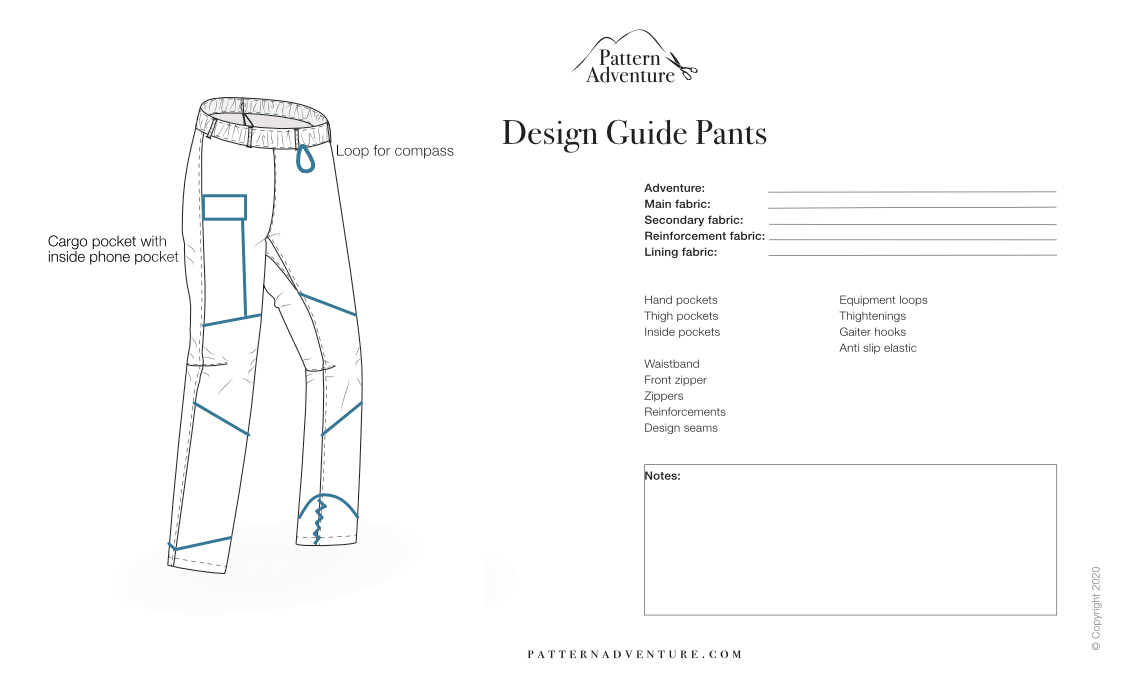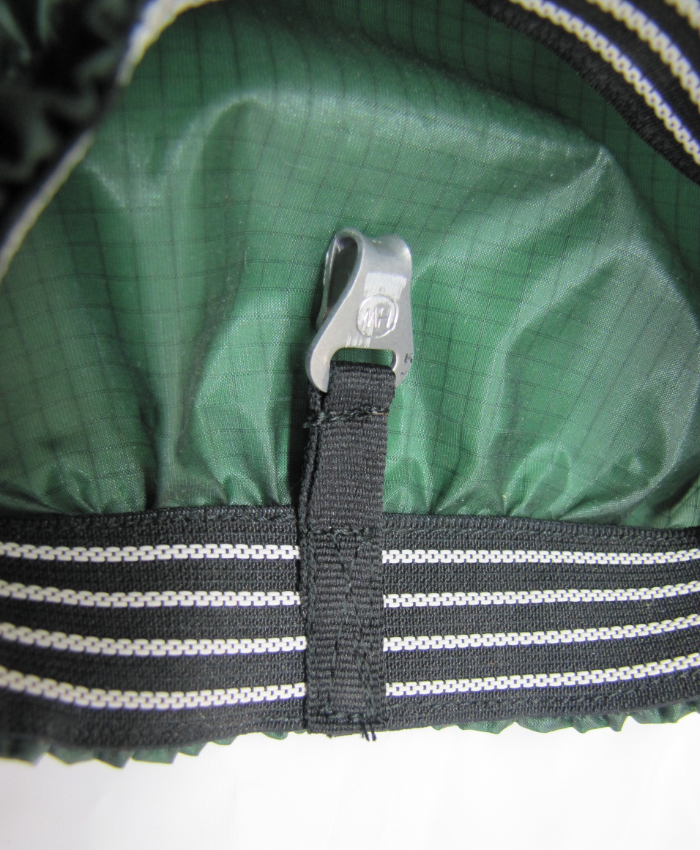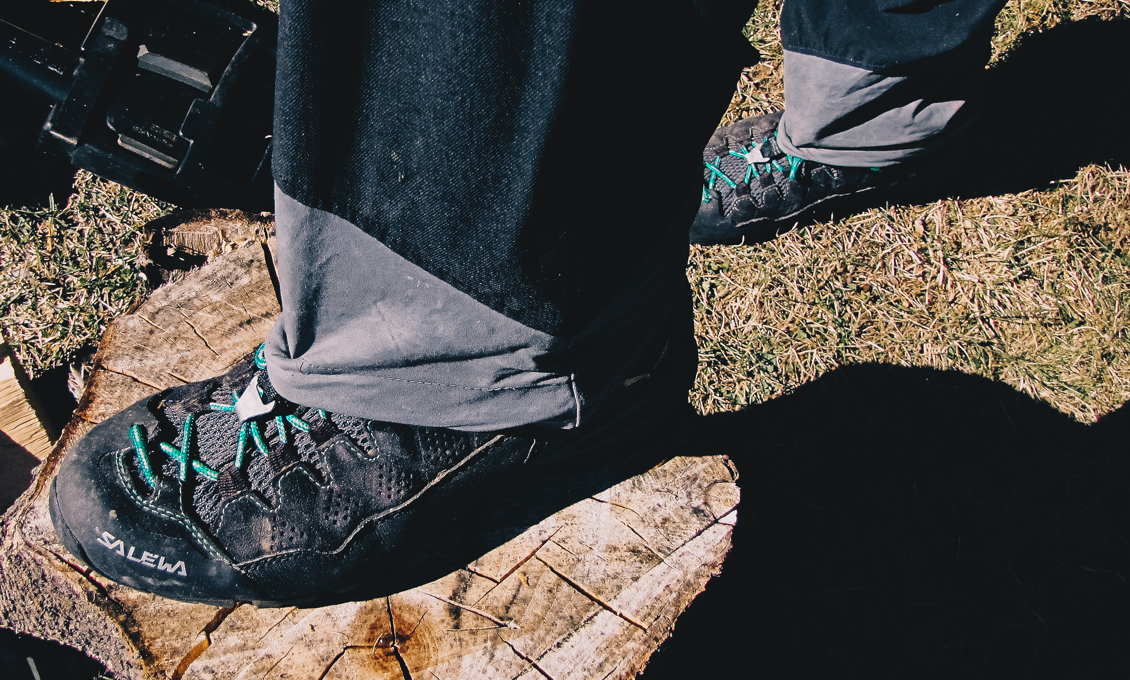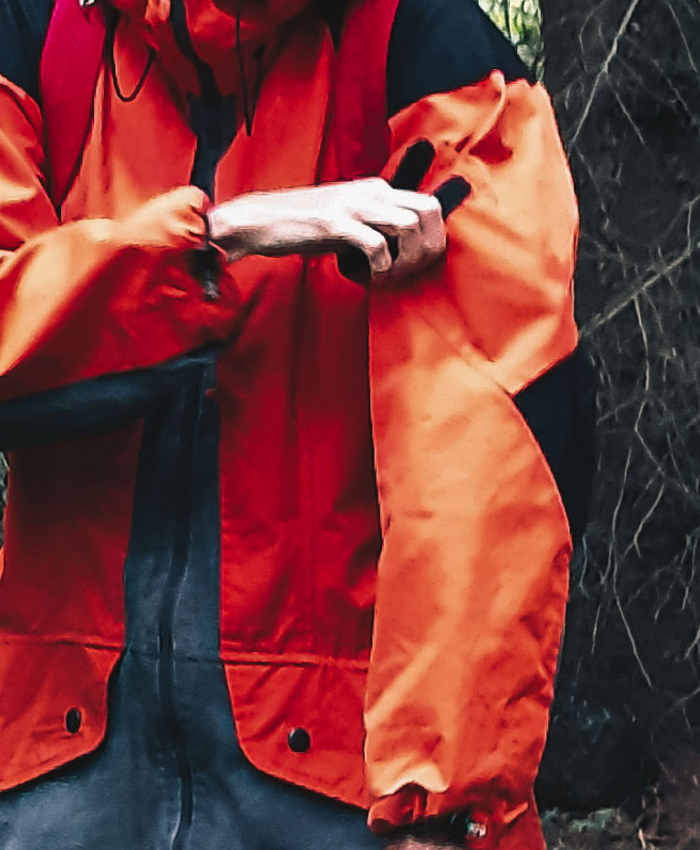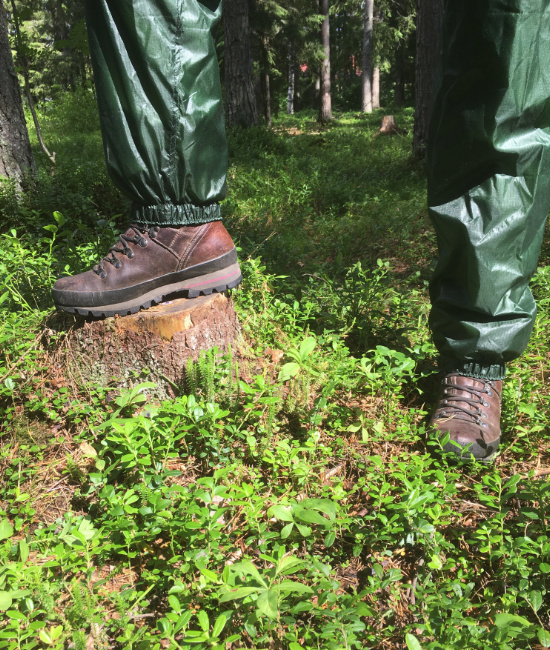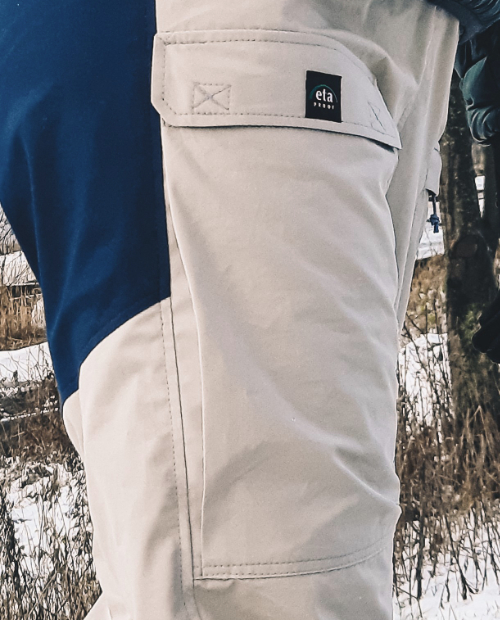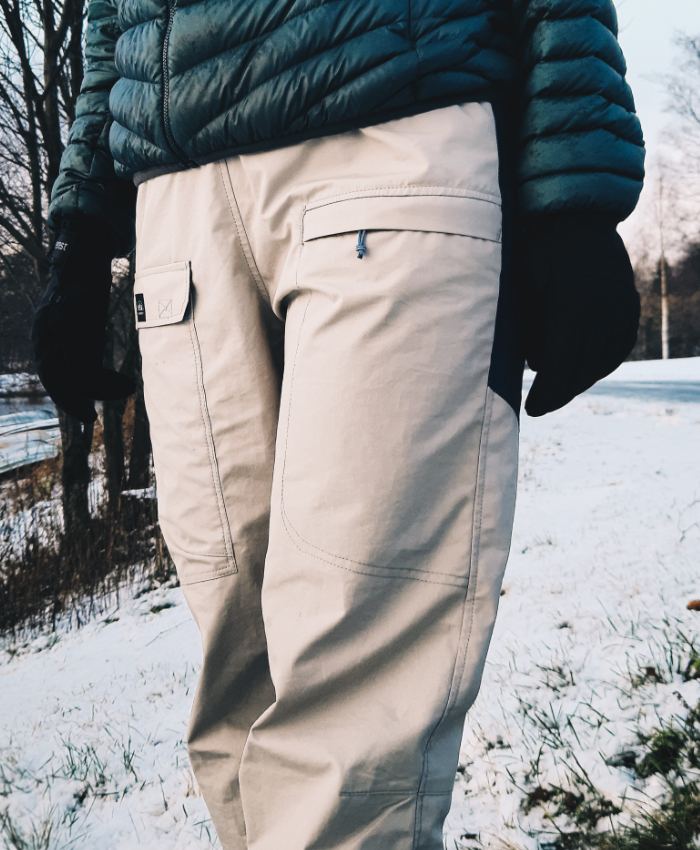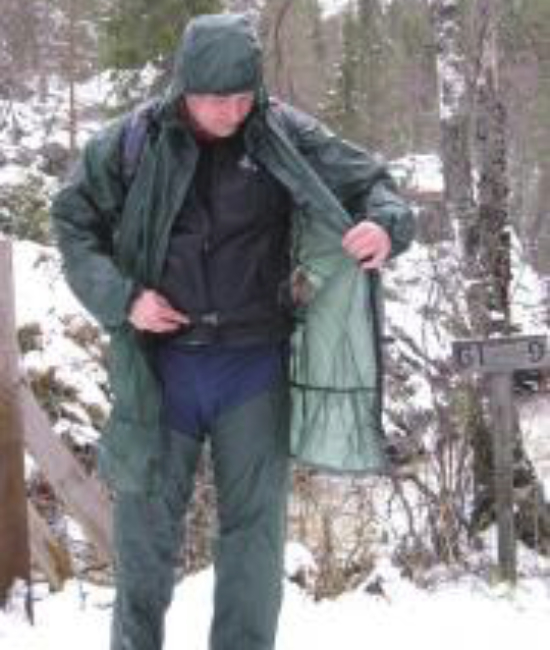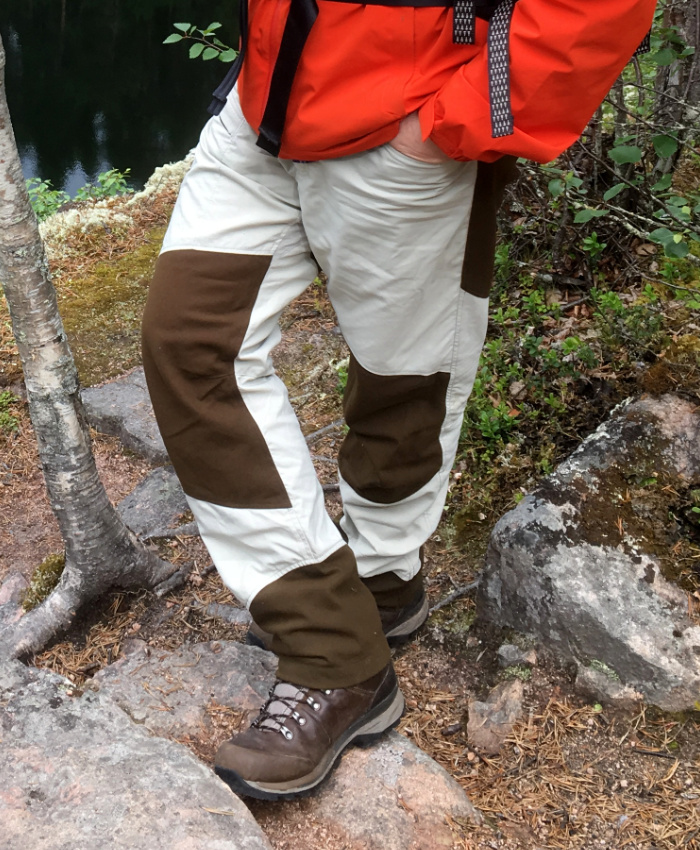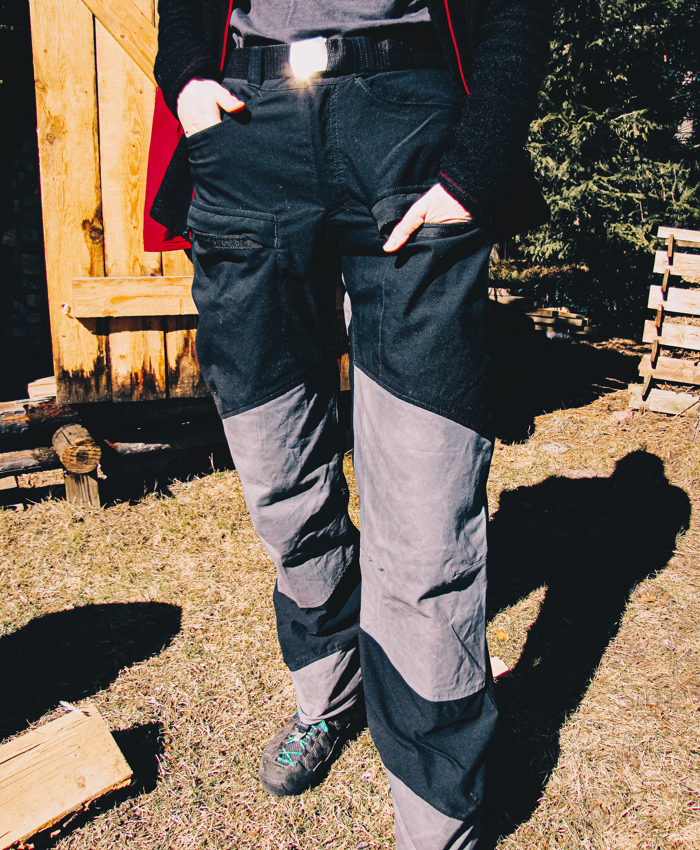Extras & Features
Q 6 - 9. These questions are all related to your extras & features. Question yourself about the functionality of pockets, tightenings, equipment loops, and so on:
a. are they in the right place?
b. what do you place into which pockets?
c. are they too small or too big?
d. are they easy to access in terms of opening and closing?
e. did you lose anything?
f. could inside pockets help?
g. which pockets did you not need or use the most?
h. where would you have needed a pocket and for what?
Cords & Loops
Pay close attention to where your cords and loops are, and how long they are when in use. They can be very helpful when used well. For example, gaiter/shoelace hooks allow you to hook your pants to your shoes. But, hanging cords or loops at the wrong places can also put you in danger. For example, if you have a hem tightening with a cord that hangs out, it can get hooked onto roots or rocks.
Reinforcements
Also pay close attention to your reinforcements. Reinforcements in the right places, often around your butt or knees, can be helpful. They can help protect your body and can lengthen the life of your garment. However, reinforcements everywhere are also not ideal because the garment becomes heavier, can to a certain extent restrict movement, and reduces breathability of your garment.
Overall weight
Q 10. How did the overall weight of the garment feel?
The overall weight of garments is defined by the fabric but also the features. Pockets, zippers, reinforcements can add up quickly. If you prefer ultralight gear, then plan these carefully. Weigh a current garment to get a first understanding of what weight you're aiming for.
Now that we have more detail, let's start designing your piece of garment in Step 3.
